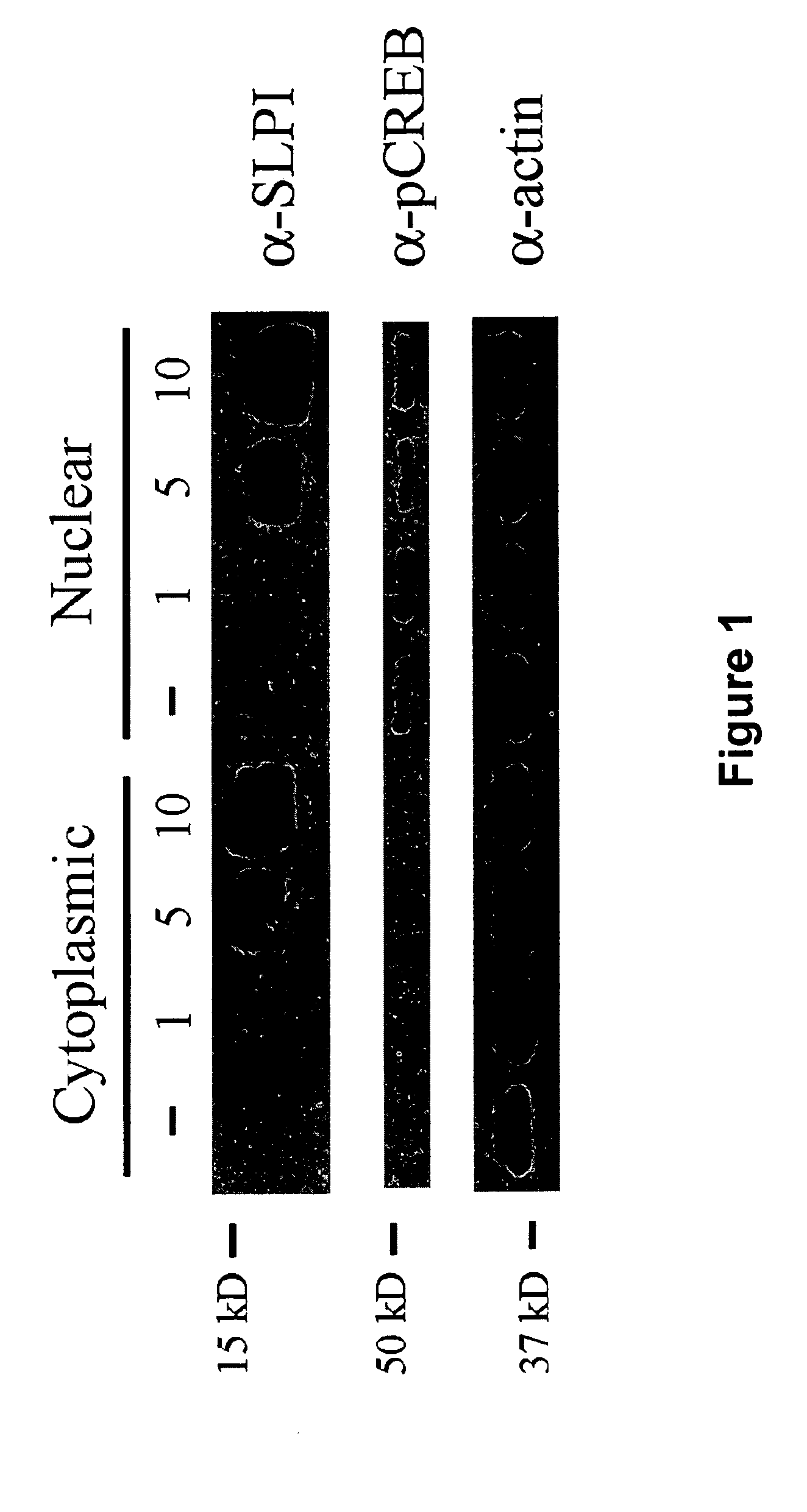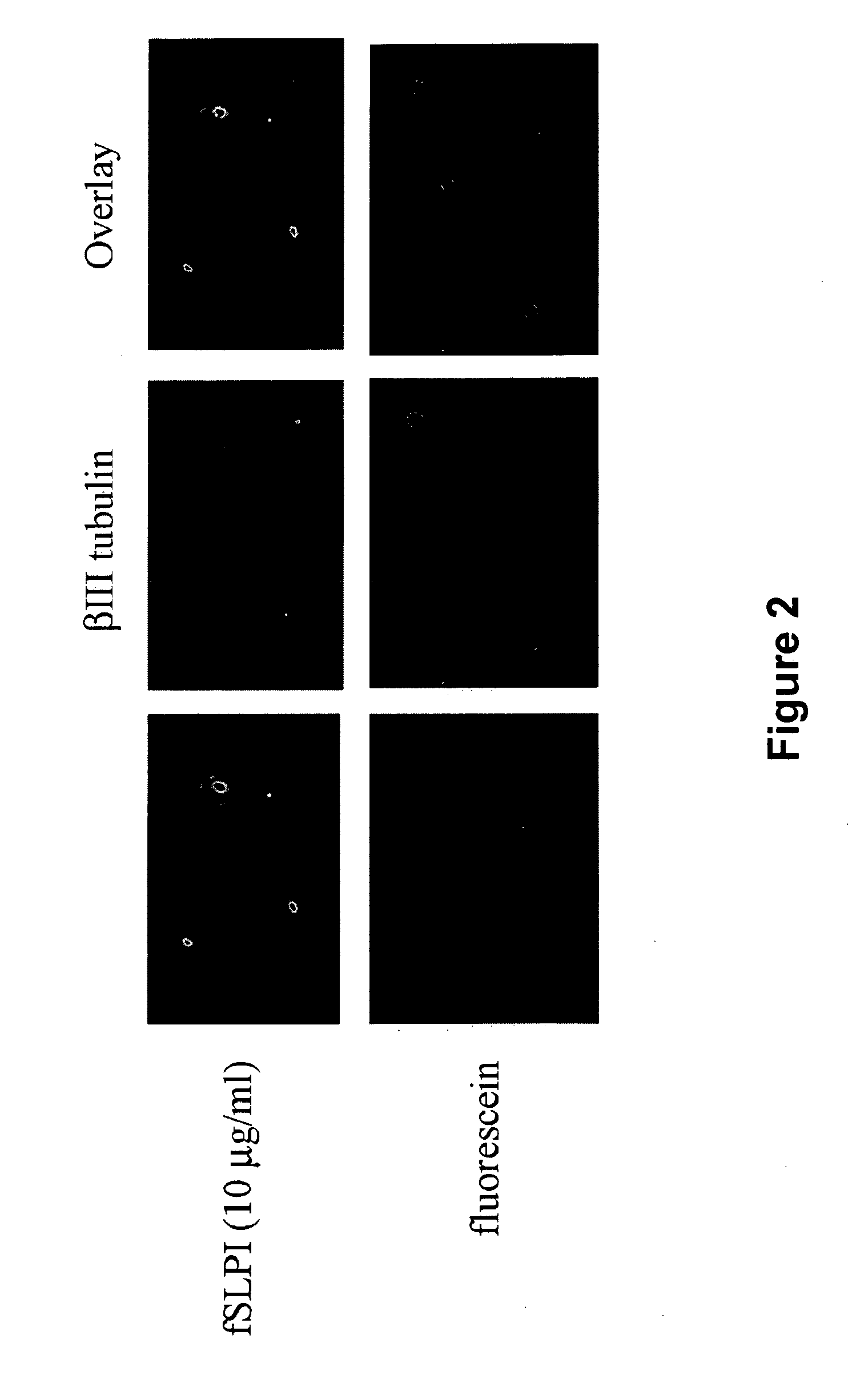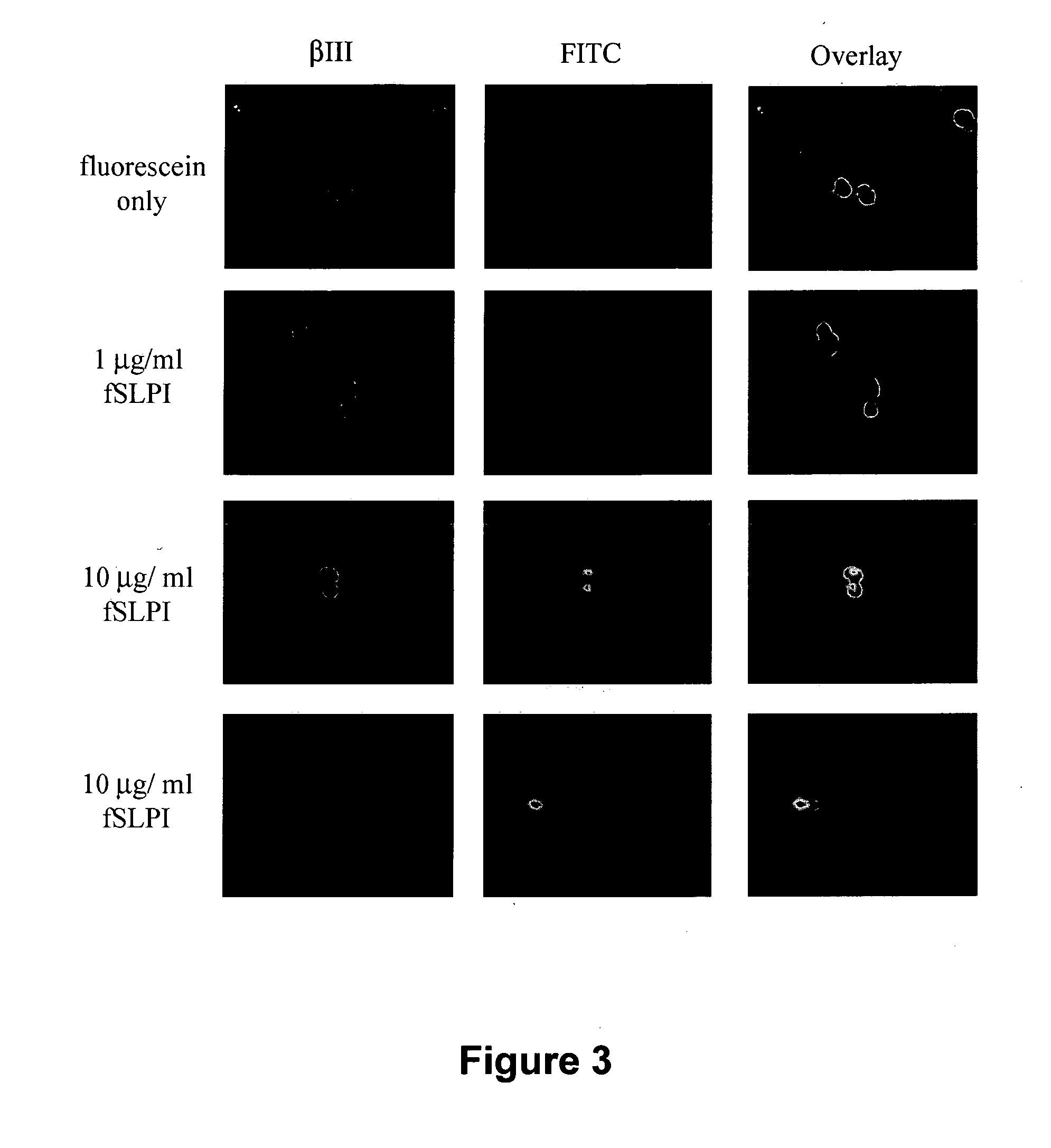Novel protein transduction domains derived from secretory leukocyte protease inhibitor
a leukocyte protease inhibitor and protein transduction domain technology, applied in the direction of depsipeptides, peptide/protein ingredients, vector-based foreign material introduction, etc., can solve the problems of ineffective and/or toxic direct microinjection, insufficient cellular localization of slpi, and inefficient intracellular delivery methods such as electroporation, liposome fusion,
- Summary
- Abstract
- Description
- Claims
- Application Information
AI Technical Summary
Benefits of technology
Problems solved by technology
Method used
Image
Examples
example 1
Recombinant SLPI Localizes to the Cytoplasm and Nucleus of Treated Cerebellar Neurons
[0122]To characterize the transduction abilities of the SLPI protein, cerebellar neurons were isolated from postnatal day 6 (P6) rats (Mukhopadhyay et al., Neuron 13:757-767 (1994); DeBellard et al., Mol. Cell. Neurosci. 7:89-101 (1996); Cai et al., Neuron 22:89-101 (1999)) and treated with 0, 1, 5, and 10 μg / ml recombinant human SLPI (R&D Systems) in SATO culture medium (Doherty et al., Neuron 5:209-219 (1990); Nature 343:464-466 (1990)). Cells were incubated at 37° C. for 1 hour, and cytoplasmic and nuclear fractions were prepared using NE-PER cytoplasmic and nuclear extraction reagents (Pierce). Protein samples were subjected to SDS-PAGE using 15% SDS polyacrylamide gels and transferred to nitrocellulose. SLPI was detected using a polyclonal antibody to recombinant human SLPI (R&D Systems). SLPI was present in increasing amounts in both the cytoplasmic and nuclear fractions (FIG. 1). The nuclear ...
example 2
SLPI Localizes to the Nuclei of Isolated DRG Neurons
[0123]To visualize internalization of SLPI in living cells, SLPI was labeled with fluorescein using a Fluorescein-EX protein labeling kit (Molecular Probes). The labeling reaction was performed following the protocol provided by the manufacturer. P5 DRG neurons were isolated (Mukhopadhyay et al., 1994; DeBellard et al., 1996; Cai et al., 1999; supra) and treated with either 10 μg / ml of fluorescein-labeled SLPI (fSLPI) or unconjugated fluorescein in SATO culture medium. Cells were then plated in 8 well chamber slides coated with 100 μg / ml poly-D-lysine (PDL) and incubated for 1 hour at 37° C. Cells were then fixed with 4% paraformaldehyde and immunostained using a monoclonal antibody to the neuronal marker βIII tubulin (1:1000 dilution, Covance). After an overnight incubation at 4° C., the cells were rinse and incubated successively with biotinylated anti-mouse antibody (1:500 dilution, Amersham) and Texas Red-conjugated streptavidi...
example 3
Dose-Dependent Internalization of SLPI into Neuronal Nuclei
[0124]To further characterize SLPI internalization into living cells, P5 DRG neurons in SATO culture medium were treated with unconjugated fluorescein, 1 μg / ml fSLPI, or 10 μg / ml fSLPI and plated onto PDL-coated slides for 5 minutes at 37° C. Cells were then fixed and immunostained for βIII tubulin as described. In contrast to fluorescein alone, which was not internalized, fSLPI was internalized into nuclei within 5 minutes in a dose-dependent manner (FIG. 3).
PUM
| Property | Measurement | Unit |
|---|---|---|
| Composition | aaaaa | aaaaa |
| Therapeutic | aaaaa | aaaaa |
Abstract
Description
Claims
Application Information
 Login to View More
Login to View More - R&D
- Intellectual Property
- Life Sciences
- Materials
- Tech Scout
- Unparalleled Data Quality
- Higher Quality Content
- 60% Fewer Hallucinations
Browse by: Latest US Patents, China's latest patents, Technical Efficacy Thesaurus, Application Domain, Technology Topic, Popular Technical Reports.
© 2025 PatSnap. All rights reserved.Legal|Privacy policy|Modern Slavery Act Transparency Statement|Sitemap|About US| Contact US: help@patsnap.com



